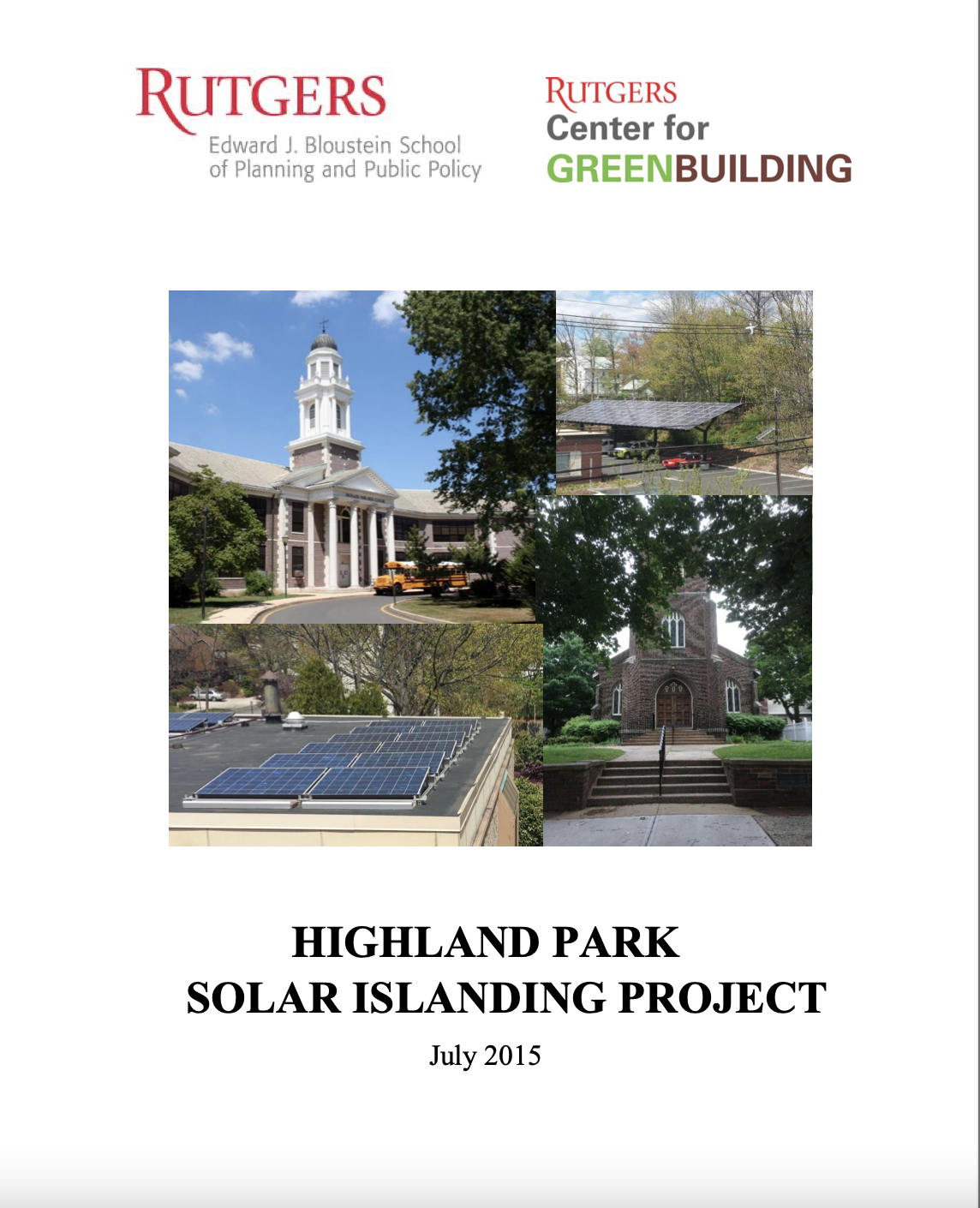Superstorm Sandy deprived thousands of Highland Park, NJ residents of electric power for up to two weeks following the event, highlighting the need for community meeting places that can function independently of the grid. Existing grid-connected solar arrays like those on Borough Hall do not have that capability. Solar arrays outfitted with battery storage and islanding inverters can be expected to provide emergency “power islands” during times of storm or other grid outage. However, the existing solar arrays in Highland Park if converted to solar power islands would be able to provide only modest emergency power. This forces planners to place strict limits on what should be powered during any emergency situation. Moreover, the energy available during the day and night for these or other future systems depends dramatically on the season and the system engineering specifications. It is therefore likely that a conventional backup generator powered by gasoline, diesel fuel, or natural gas will still be needed for certain hours of the day to be prepared for emergencies that could happen any time of the year. For these reasons, solar islanding should be considered as one of several strategies aimed at increasing community resiliency.
This report analyzes the power demands and associated functions that could be sustained by three existing solar installations in Highland Park, if they were converted into solar power islands. It does so through the establishment of a template for estimating critical versus non critical loads, on the demand side, in the context of available solar power supply. This results in a replicable basis for prioritizing which electrical services will be served by solar islanding projects, in Highland Park and beyond. Whereas each of the three sites surveyed could support basic cell phone charging and offer a dry, partially lit, space in which to shelter, their ability to provide full lighting, cooking and especially heating, ventilating and air-conditioning is more constrained, given the more energy intensive requirements of some of these systems. Also, these buildings are differently endowed in terms of their electrical and mechanical services, basic layout, daylighting attributes and also locations. The case study analysis addresses these differences and makes attendant recommendations for existing and future site improvements that would benefit sheltering functionality.
In turn, this analysis helps to guide designs of emergency operations plans. While it would be premature to include solar islanding functions in the Emergency Operations Plan for Highland Park, given that these capabilities do not currently exist, we provide in the Recommendations section generic language consistent with the federal NIMS (National Incident Management System) standard for adoption by other municipalities who may already have solar islands and/or for Highland Park in the future.
